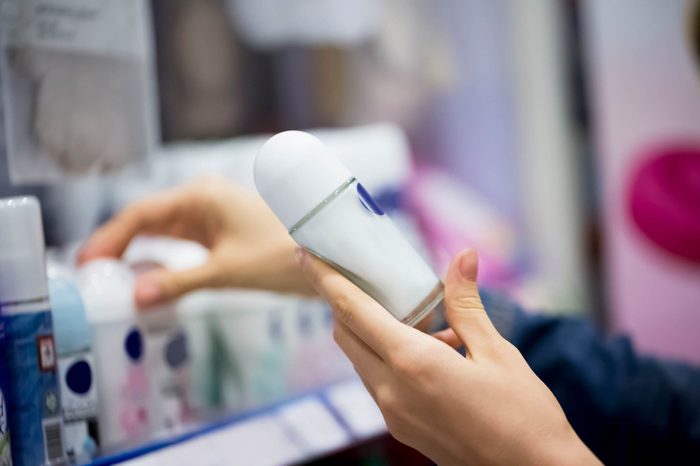
Not knowing the difference between deodorant and antiperspirant
Antiperspirants reduce sweat, while deodorants reduce odour.
According to Fayne Frey, dermatologist and founder of FryFace, most antiperspirants contain aluminum salts, sometimes mixed with a zirconium salt, which bind to a protein in the sweat gland ducts. This creates a sweat duct plug that temporarily tamps down sweat production. Deodorants, on the other hand, are topical products that either neutralize odour—using ingredients that kill some of the bacteria that contributes to the development of body odour—or simply mask it. “They do not reduce the amount of sweat expelled and will not keep your armpits dry,” explains Tsippora Shainhouse, MD, FAAD, board-certified dermatologist in Los Angeles and clinical instructor at the University of Southern California.

Applying it right after shaving
Be careful when swiping on deodorant or antiperspirant immediately after shaving, especially when using products with a higher alcohol content. These can cause irritation, according to Alisha Plotner, MD, a dermatologist at The Ohio State University Wexner Medical Center in Columbus, Ohio.

Layering deodorant
You may use this technique with dry shampoo and possibly mascara, but a fresh layer of deodorant won’t keep you fresh if it’s sitting on top of yesterday’s stench. You need to apply product to clean, dry skin, so it can adhere directly to the surface. If layered on top of an older product (especially a thick cream or solid) it’s likely to be less effective, explains Dr. Plotner.
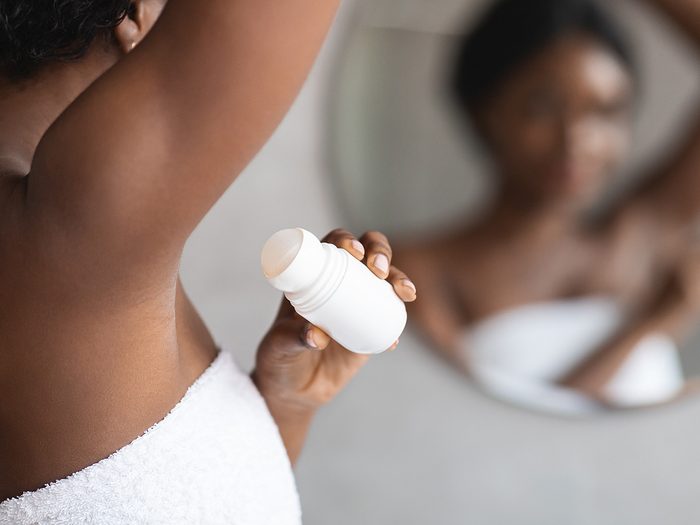
Applying it in the morning
Contrary to popular belief, you should actually be applying deodorant in the evening, before bed. Deodorants and antiperspirants are most effective on skin when sweat ducts are less active and there is minimal moisture. “Because deodorant should always be applied to clean, dry skin, it’s best to shower in the evening, pat your skin dry with a towel, and then apply deodorant,” explains Joel Schlessinger, MD, board-certified dermatologist. “If you miss the fresh scent of deodorant, it’s okay to apply again in the morning. However, this is more for your own comfort level than anything else.”
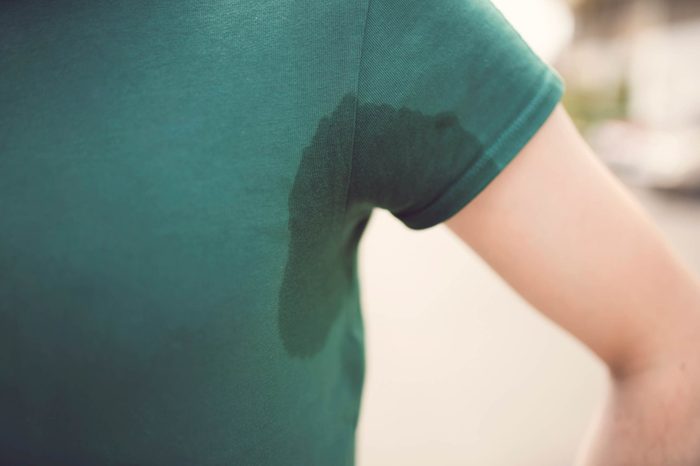
Not applying it every day
This one can go either way. “Depending on your body and what type of deodorant/antiperspirant you’re using, you may not need to apply every single day, explains Dove dermatologist, Alicia Barba, MD, in Miami. Some antiperspirants are made to last 48 hours, which means daily application isn’t essential. When in doubt, read the label, or just cleanse and reapply.
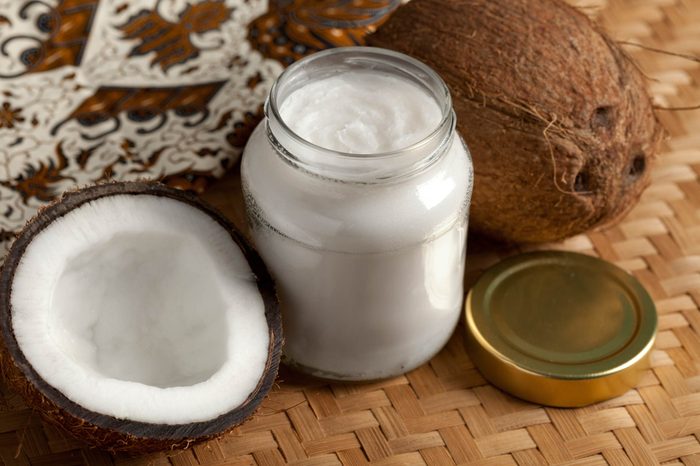
Forgetting to moisturize
Dr. Frey advises applying a dimethicone-based moisturizer, like Aveeno Daily Moisturizing Lotion, to the armpit in the morning to minimize irritation. For a more natural alternative, Sharla Martin, spa director at Windsor Court Hotel in New Orleans, recommends moisturizing with coconut oil. “Coconut oil soothes dry skin and can reduce water loss in very dry skin. It has natural antibacterial properties and is incredibly soothing to the skin in those delicate places.”

Using the wrong product
It’s important to take into consideration your skin type and any skin issues or sensitivities when choosing a deodorant. Higher alcohol content formulas, like sprays and gels, may be irritating to sensitive skin types—as can heavily fragranced formulas, according to Dr. Plotner. “You have to take care of the skin under your arms just like you do the skin on your face,” says Dr. Barba.
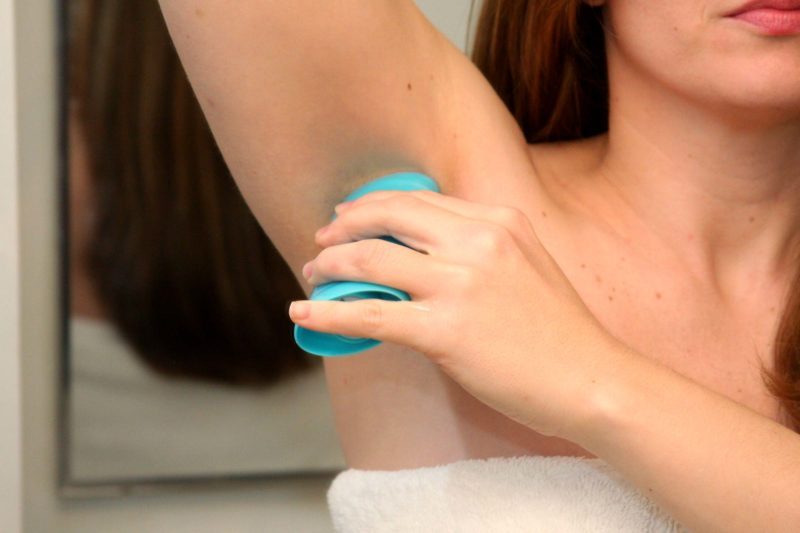
Not knowing the difference between regular and clinical strength
Regular antiperspirants must show a 20 percent reduction in sweat duct plug formation, while clinical strength must show a 30 percent reduction. “Clinical strength antiperspirants contain a higher concentration of aluminum zirconium salts, and although they may be more effective, they may also be more irritating,” says Dr. Frey. “I advise my patients with sensitive skin to avoid antiperspirants with fragrance as well as extra strength formulas, and to look instead for products that contain dimethicone, which may also prevent irritation in susceptible individuals.”
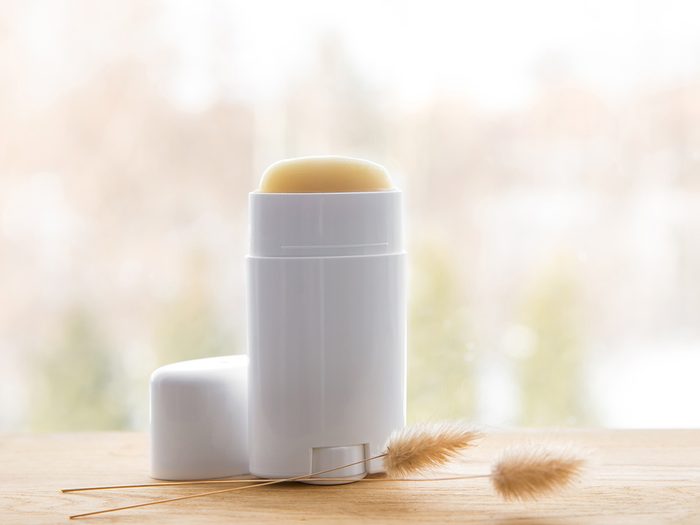
Not considering natural formulas
Have you ever thought about using natural deodorant? Before you assume it doesn’t work, you should know this—they can be good alternatives for a few reasons. Natural deodorants may be viable options for people with light sweating, or those who are hoping to camouflage and/or prevent mild odour, according to Dr. Plotner.
(Find out which natural deodorants passed out sweat test.)
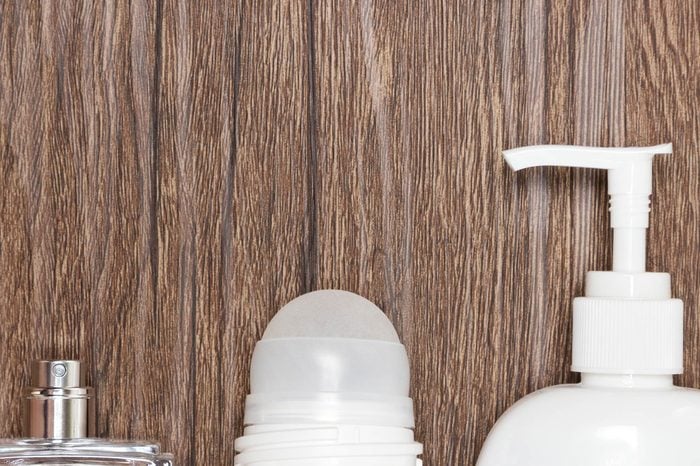
Not knowing how to get it off clothes
It’s frustrating to slip on a blouse or sweater and realize you just got white deodorant smudges all over it. Don’t worry, there are a few proven methods to wipe away those dreaded marks. A damp washcloth works well (just be sure to wring it out to avoid soaking your clothes). To avoid white marks all together, simply opt for a clear formula.
Next: I Tried Natural Deodorant for a Month—Here’s What Happened
